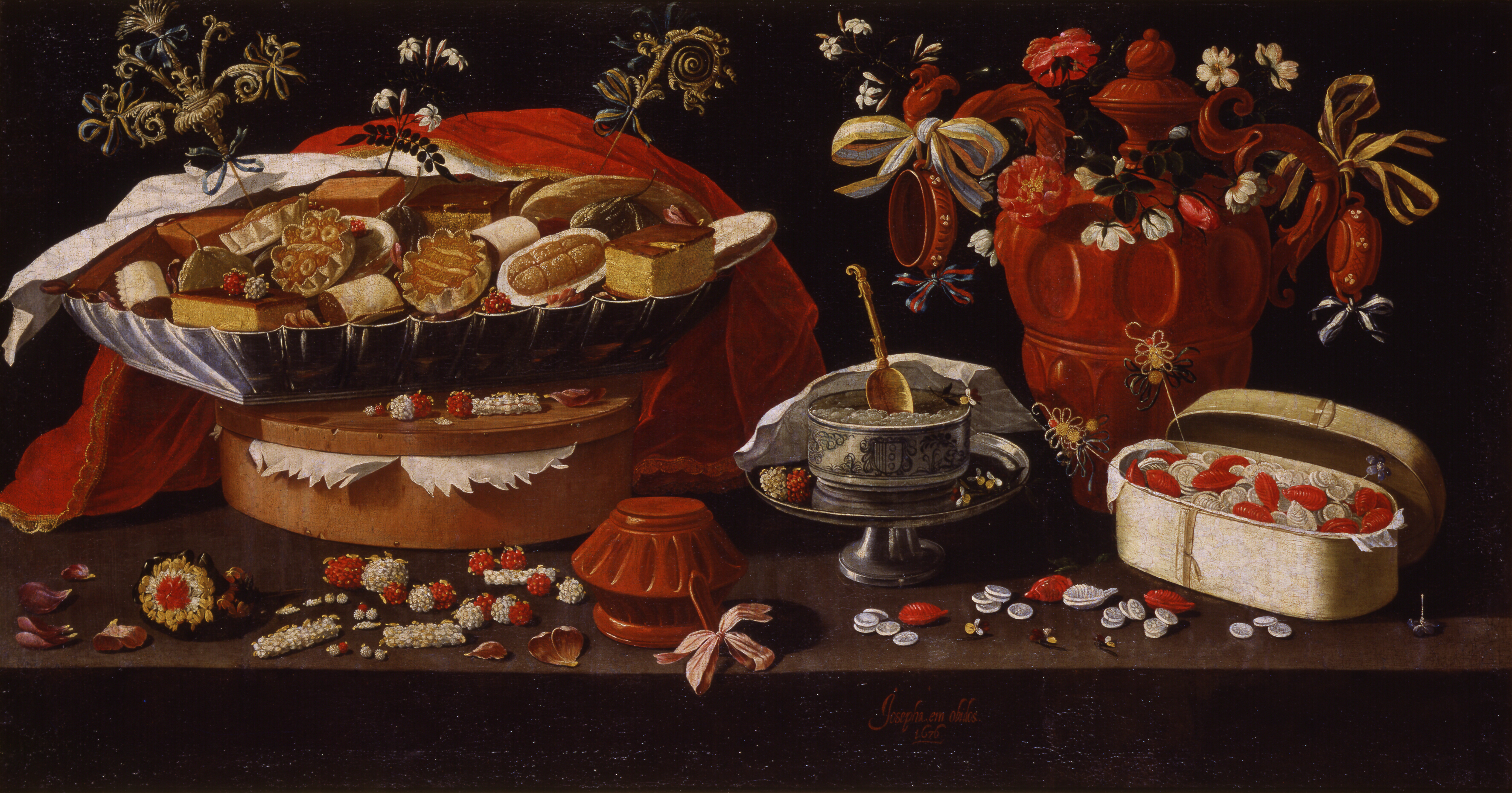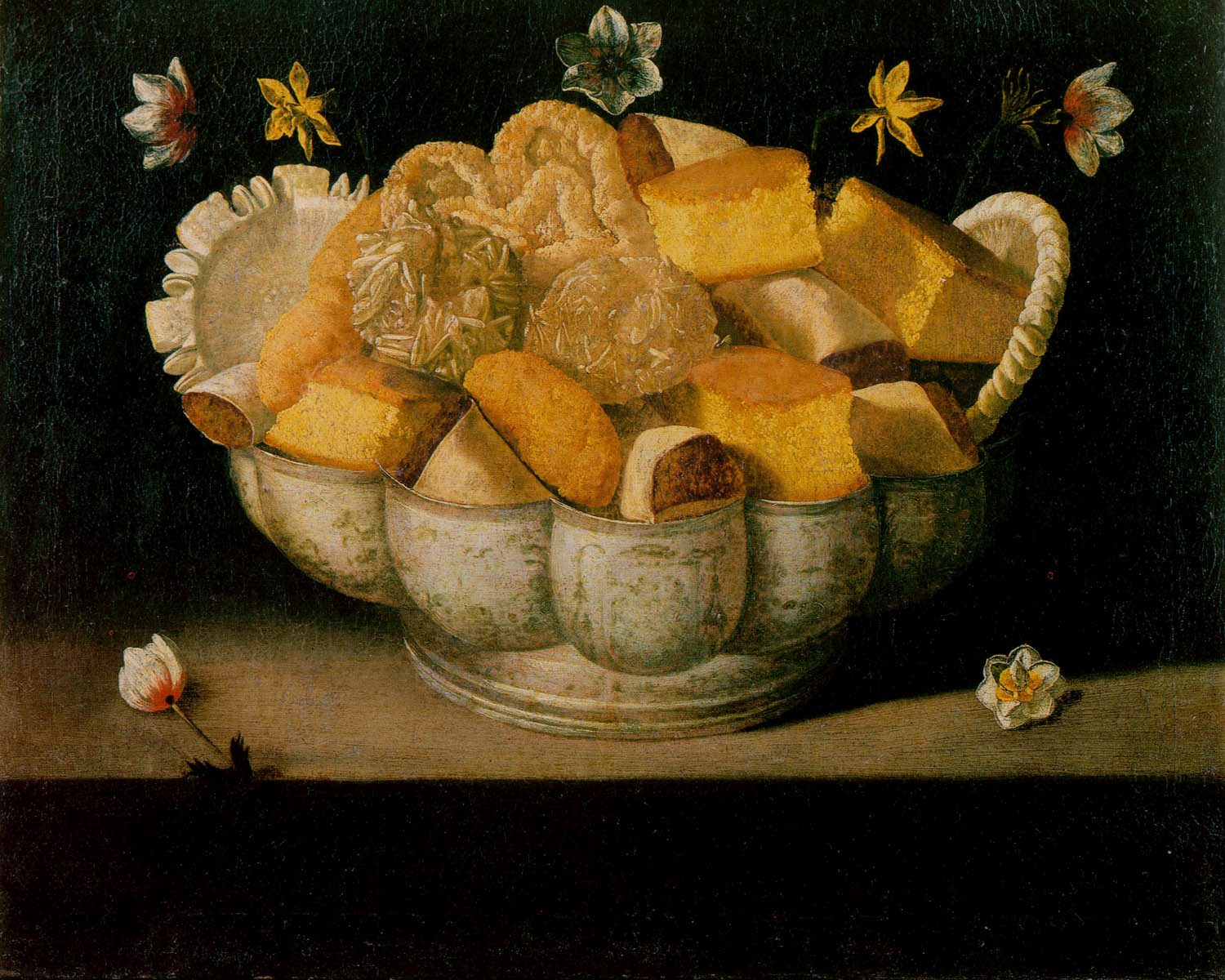Continuing the practice of still lifes by Baltazar Gomes Figueira, her father, Josefa de Óbidos, who introduced the genre into Portuguese painting, signs this work in Óbidos in 1676. In the composition, following a horizontal ordering scheme in parallel to the table and using a system of collecting unique elements, it displays a large set of objects—boxes, a jug, a clay jar, a dishwashing cup, a tray, and a tin cup—along with a variety of confectionery, sweets, flowers, sticks with floral ornaments, and fabrics, which sumptuously fill the background. The angular arrangement of the tray and the box on the left add some vibration to this linear arrangement, highlighted by the variants of the chromatic palette. The descriptive and ornamental richness of the painting verified in the workshop of Óbidos and immensely enjoyed by the clientele, do not detract from the innovation introduced by the painting by creating variants in the distributions of objects on the pictorial surface, standing out against the dark background, adding dynamism and sumptuousness.
I got hungry! : D
We present today's painting, which belongs to the collection of Biblioteca Municipal Anselmo Braamcamp Freire in Santarém, Portugal, thanks to Europeana, the great promoter of Women Artists in Art History. : )
P.S. Click here if you’re on a diet and craving something sweet! It's just art, no worries!


 Josefa de Óbidos
Josefa de Óbidos